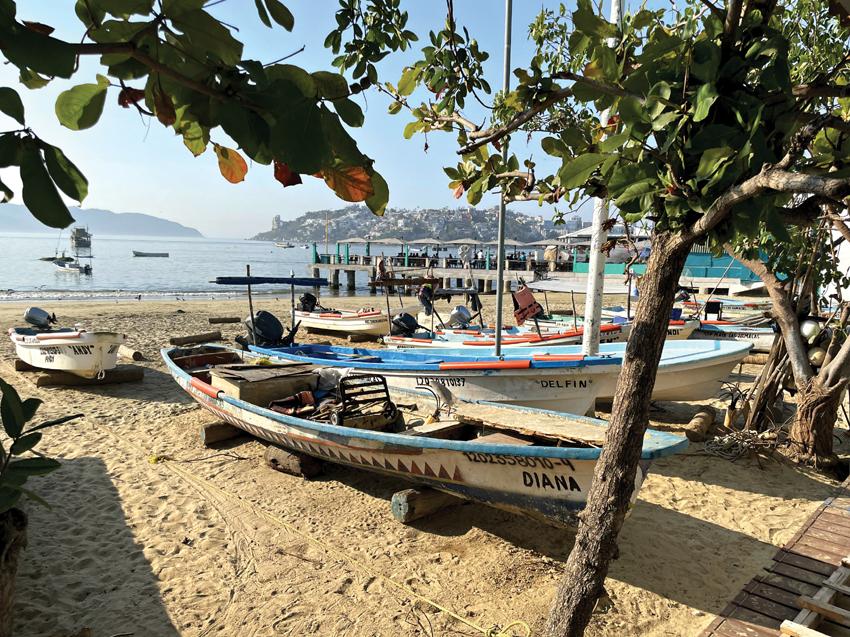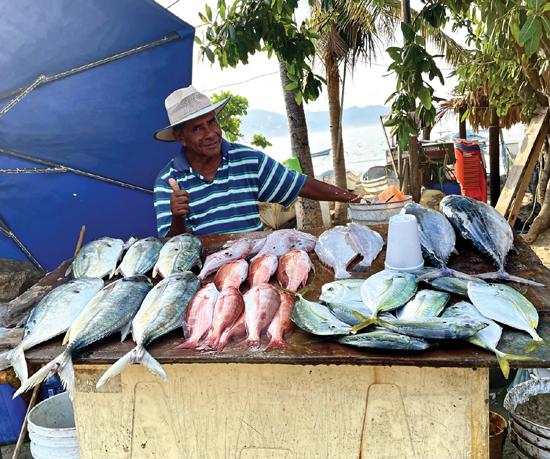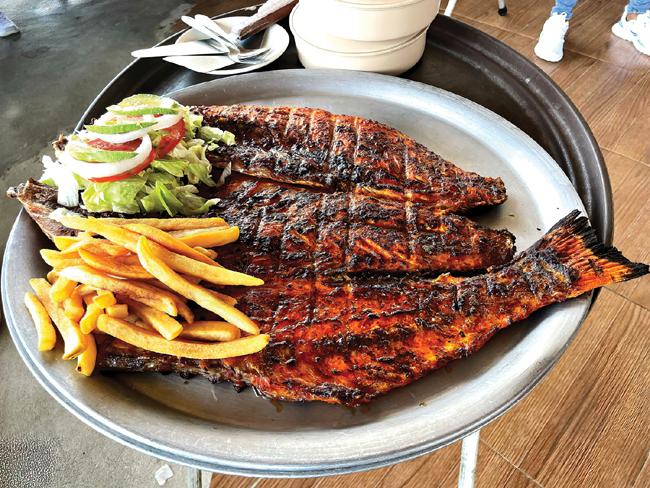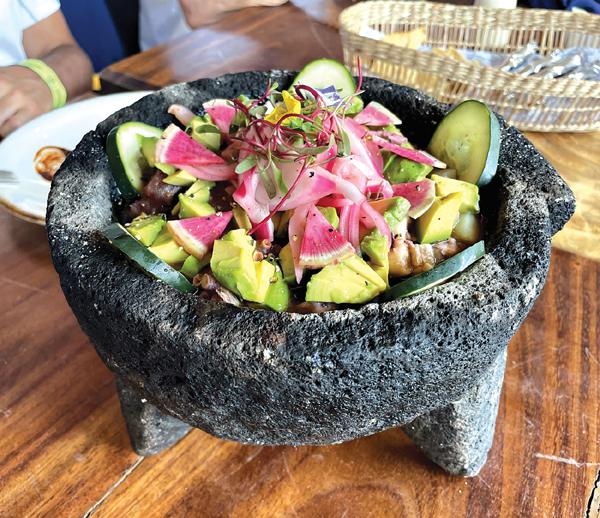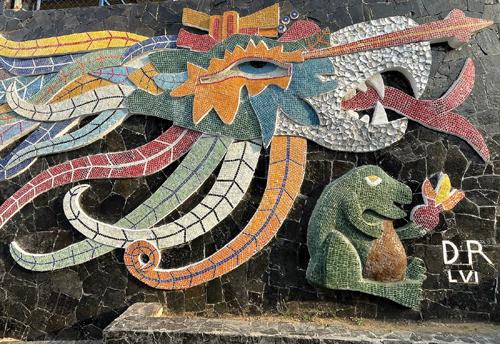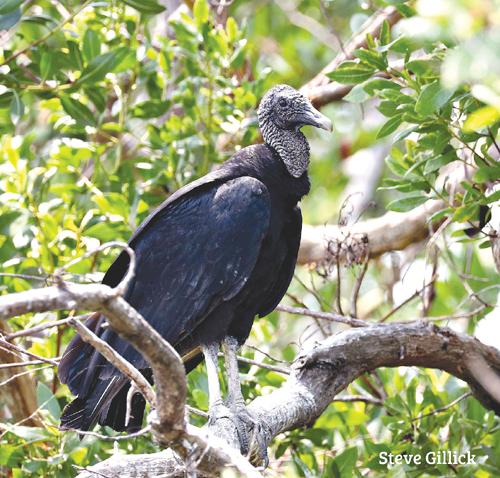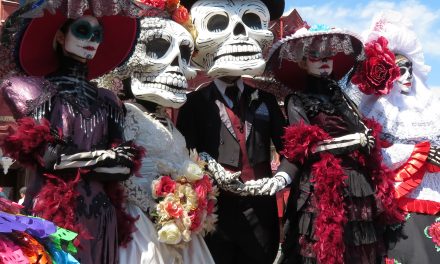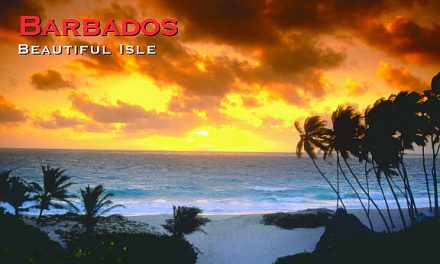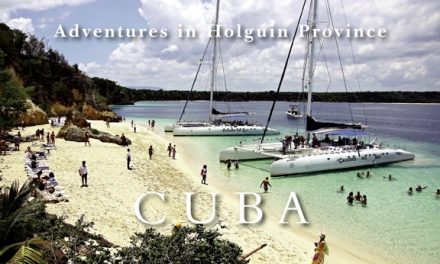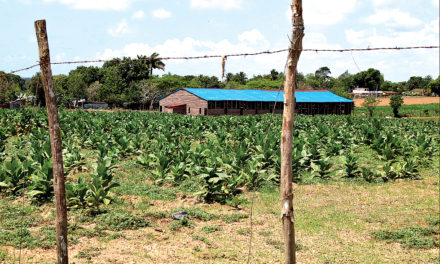Mexico
Acapulco is on the comeback trail
Article and photography by Steve Gillick
One could readily agree that Sergio and Acela Mejia, the owners of Restaurant Bar Gaviotas II, are the personification of Acapulco! Ideally situated by the sand and surf at Playa Bonfil, just south of the city on the Pacific Coast of Mexico, the specialty of the house is Pescado a la talla. This mouth-watering Red Snapper and Sea Bass culinary masterpiece is grilled to perfection using a secret family recipe, resulting in an almost creamy, umami-mouthfeel-taste sensation.
The restaurant servers are High School and University students from villages in the surrounding Sierra Madre del Sur Mountains, and they learn that customer service must be excellent every day. And so they smile when they portion the platter-sized fish and plate it for the diners. Sergio tells me, “We understand that Acapulco depends on tourists who want to return home with memories of the city and its history, the ocean, the beaches, and the food. They allow us to serve them, and we thank them, with our food, for giving us the opportunity”.
And the same attitude of customer service and creating food memories continues.
El Nido Restaurante (“The Nest”) sits on top of Cerro del Magote in Papagayo Park with a commanding sea view. The locally handcrafted table figurines and masks are attention-getters, but so is the pozole, a traditional Acapulco and Guerrero State soup. We are offered white (very little spice), green (medium spice), or red (spicy), and we choose green with pollo (chicken). Fresh oregano, red onion, and serrano chili flakes punctuate the soup, making this a delectable and hearty meal.
As if the view and the pozole were not enough, lunch was complemented by the festive singing of the group ‘Mariachi Tequila de Acapulco’. Following their robust rendition of ‘Quizás, quizás, quizás’, Horacio Garcia Aquilar from Alquimista Mezcal Artesanal led us through a tasting of three kinds of mezcal, including one with a giant (dead) wasp in the bottle. Apparently, it’s used to cure lovesickness.
During the tasting, we learned that “you don’t drink mezcal…you kiss it”. But before the peck, it’s important to visually check the clarity of the beverage and experience the ‘nose” by sniffing the mezcal from one nostril and then the other. Then you put “your whole nose” into the glass to breathe in the bouquet. Finally, with the greatest amount of saliva you can accumulate in your mouth, you take a tiny drink and appreciate the effect on your taste buds. I will say that after several tastes, our taste buds were quite pleased.
Wahoo Acapulco is another food milestone, where every bite turns into an “Oh my goodness” moment. Chef Diego Mendec explained that he combined traditional Mexican foods with contemporary tastes, and inspired by customer feedback, the result was “more love, more feeling, more everything!” And more is what you want after you taste the ultra-fresh ‘typical’ ingredients in combinations of tuna, avocado, octopus, scallops, shrimp from Mazatlan, and fish from the Pacific Ocean.
Alongside Acapulco’s Carretera Escenica (Scenic Highway), Las Brisas Acapulco, a 5-star hilltop hotel, celebrates peace, relaxation, luxury, panoramic vistas of Acapulco Bay, dreamy sunsets, and food memories. Under the supervision of Executive Chef Josue Ramirez, our evening meal was highlighted by a perfect dish of thick, juicy Cajun shrimp with tarragon crustacean reduction on a bed of the creamiest risotto you can imagine.
While food is a great destination attraction, Acapulco has lots more to feast upon!
La Quebrada remains one of the top draws. This is the rocky hill where the world-famous cliff divers perform from heights varying from 30 to 41 meters (98 to 135 feet), diving into an ocean pool between the rocks, where the depth ranges from 4.8 to 5.8 meters (16 to 19 feet). During the daylight hours, the divers judge the depth visually. However, according to divers Osiel (age 13), Dorion (age 20), and Giovanni (age 33), the divers determine the depth of the water after dark by listening to the waves. They jump into the pool, climb the rocks on the far side of the hill, pray at the shrine to the Virgin of Guadalupe, wave to the patrons in the viewing areas, and then dive when the waves are just right. It’s a spectacular event.
Acapulco’s historic area is not far from the cliffs centered around the Zócalo, or public square, in Plaza Juan Álvarez, with a history dating to 1555. The focus, beyond the colored flags, is the Catedral de Nuestra Señora de la Soledad, the central Catholic Church in the city showcasing a combination of Neocolonial, Moorish, and Byzantine architecture. The Zócalo comes alive at night with eateries, market stalls, and music. You can even arrive in style in a calandria, one of the colorful tractor-drawn carriages festooned with twinkling light bulbs.
Up a winding Street just north of the Zócalo is ‘the House of the Winds’, where Diego Rivera, the famed muralist, lived with the art patron Dolores Olmeda for the last two years of his life. The house is closed to the public, but the street mural, Exekatlkalli, draws visitors and art aficionados throughout the day. The mural, made of colored tiles and shells, depicts Quetzalcóatl, the feathered serpent, facing off on either side of the gate. Other figures include Tlaloc, the God of rain, lightning, and thunder, Xoloitzcuintle, a black Mexican, hairless dog, and a frog that affectionately recalls Olmeda’s nickname for Rivera; “My beloved frog”.
Acapulco’s Malecon, or seaside boardwalk, begins in the historic zone and provides a relaxing stroll around Acapulco Bay. The scenery includes mountains, slope-side residential homes, sandy beaches, waterfront restaurants, tour boats, fishing boats, colorful nets, and fishermen selling the daily catch of red snapper, horse mackerel, sole, pompano, tuna, and more.
Nearby lies the Fort of San Diego, initially built in 1617. The Acapulco Historic Museum on the grounds tells the story of the Fort’s role in Mexican history, from defending against pirates in the 17th century to the Mexican War of Independence in the 19th century.
The Malecon continues past small parks where residents chat, jog, and exercise beside trees filled with Yellow-crowned Night Herons!
And on the topic of parks and birds. Outside the city proper, there is a celebration of nature at Tres Palos Lagoon. We spent several peaceful hours on a boat journeying along the waterway and mangroves and spotting Great Egrets, Black-crowned Night Herons, Anhingas, and Frigate Birds.
When Elvis Presley starred in Fun in Acapulco, the top-grossing movie musical of 1963, Acapulco, a.k.a ‘the Riviera of Mexico’ was enjoying a heyday of movie stars and tourism that started in the 1940s and would last until the end of the century. Then, the violence of cartels up and down the Guerrero coast pretty well closed Acapulco to all but local tourists. And yet another setback was Hurricane Otis, a Category 5 storm that devastated Acapulco in October 2023. With perseverance and determination, Acapulqueños immediately started to rebuild damaged buildings and infrastructure and set their sights on re-introducing Acapulco’s allure.
So, it’s great news that international visitors are once again experiencing Acapulco’s charm as it rapidly advances along the comeback trail. It’s a city that’s definitely worth visiting.

